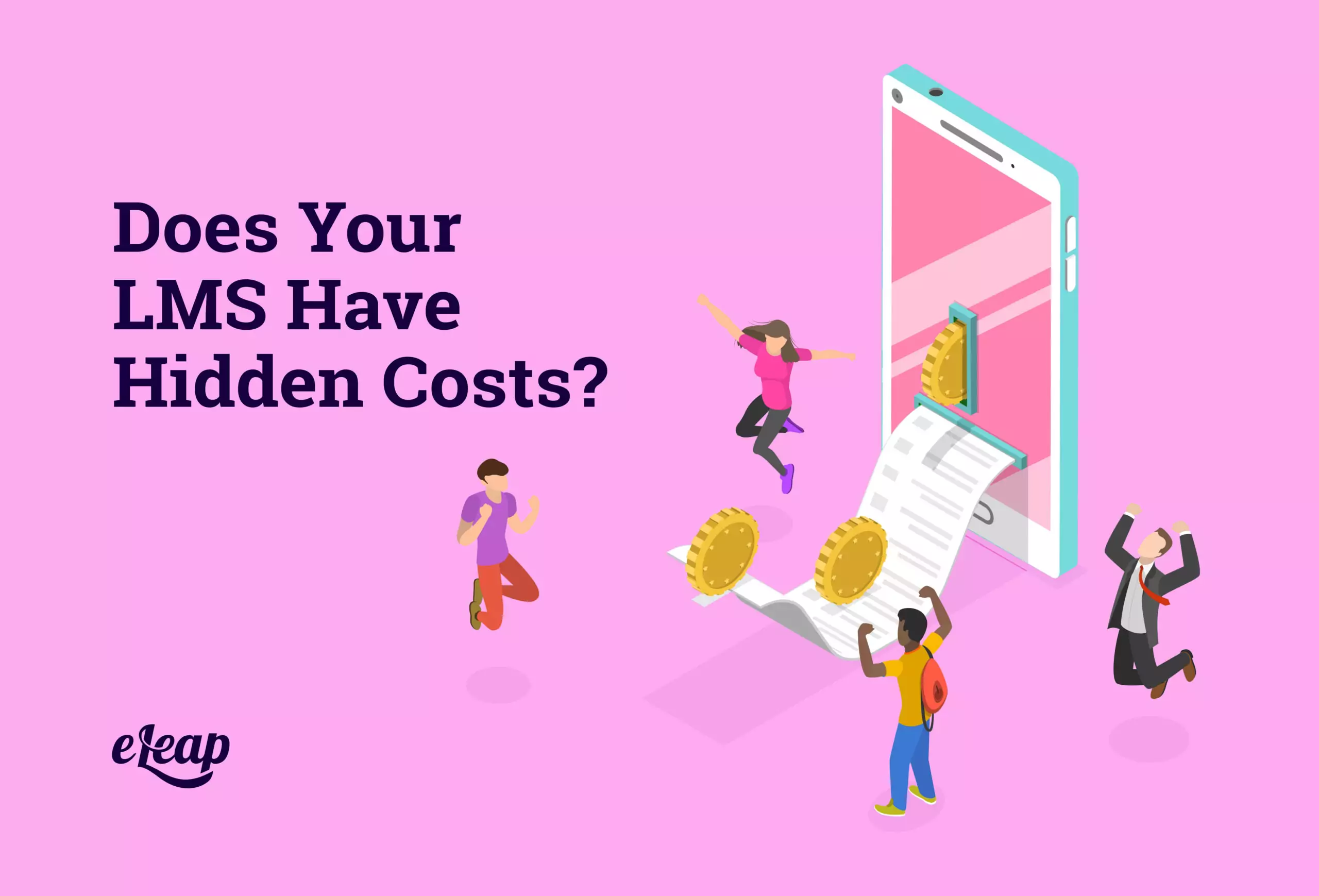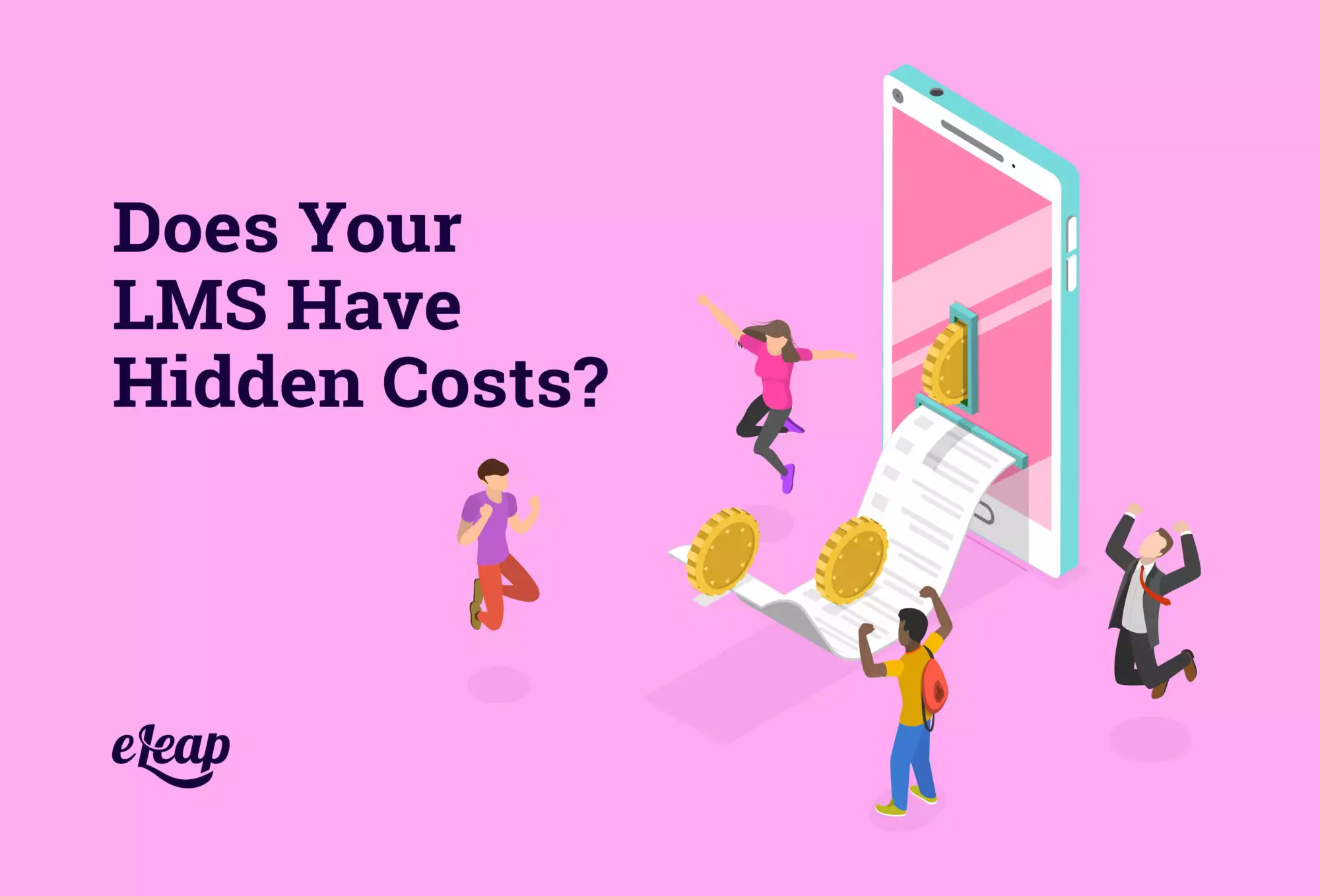Does Your LMS Have Hidden Costs?

Learning management systems are crucial components of good training and a well-run organization. They have the potential to offer seamless training and development modules for your employees, giving them the access to relevant content that they need to perform at the highest possible level. An LMS engages employees, increases productivity, and can seriously increase your organization’s revenue. It helps you attract and retain high-quality employees while allowing you to contribute to their career development.
But there are certain things you need to look for in an LMS in order to get the best possible outcome. This starts with determining what your budget is for purchasing or upgrading your LMS. Can you afford the best the industry has to offer, or do you have to go with a more basic option?
To determine exactly what your organization can afford, you need to know what to look for in an LMS. Specifically, you need to know how to determine if hidden costs will derail your eLearning budget.

Associated Technology Can Rack Up Costs
When shopping for an LMS, it’s critical that you ask vendors what technology is included in the price, and what will cost you extra. For example, not all LMS vendors include mobile-friendly technology that works on every smartphone in the initial cost. You should also ask things like how many different licenses for smartphones, desktops, and laptops are included. Small costs can add up quickly, so it’s critical that you know these things up front.
Inexperience Is Pricey
You probably aren’t an expert in the area of design and implementation of an LMS, so these things should be left to those who know what they’re doing. Avoid trying to take on too much with your LMS yourself. Additionally, don’t hire a third-party vendor that doesn’t possess the requisite skills in developing a high-quality, easily navigable program just because they fit your price point. Remember, you get what you pay for. Even if upfront costs seem cheap, it can end up being more pricey to fix problems caused by a subpar, cheaper company than to go with the more expensive option initially.
Content Can Be Costly
You can have the best LMS in the world, but without high-quality content, what’s the point? It’s easy to think that you can cut costs by creating your own content, but that isn’t always the smartest idea.
Companies are training employees now on a continual basis and laws, regulations, and industry standards are changing rapidly. Training content must flow and adapt to those changes. This means there’s a lot of material to cover, and that material is continuous and needs to be made to a high standard.
Look into options such as how much it costs to create tailor-made content versus choosing stock content. It might be beneficial to mix and match, using stock content for standardized modules such as sexual harassment can help to lower the price.
Time Is Money
eLearning is tricky to develop correctly and takes a significant amount of time. When you’re designing your training modules, add in elements that will enhance your training and the audience’s education. Don’t include elements merely because they’re the latest technology.
Features such as automations can be well worth the investment. In the long run, they’ll save you and your organization a lot of time. More established providers will be in a better position to ensure you understand what features are time-consuming, and which ones will actually end up saving you time.
Consider the Cost of Integration and Maintenance
With employees working from laptops, pads, and smartphones, your LMS needs to be able to integrate seamlessly. Make sure to ask a vendor if integration is part of the initial price point.
Moreover, don’t forget about upgrades and maintenance. As with all technology, your eLearning system will need some upkeep from time to time, so it’s critical that you know how much that maintenance is going to cost you. Similarly, when it’s time for an upgrade, is that upgrade going to break the bank?
Cost of Support Teams
Good learning management systems are very self-sufficient, but no matter what, they won’t be able to run entirely on their own. You’ll need a support team, and support costs money.
Many vendors offer their own support teams, such as customer support, but are these services included in the price? You may also need to spend money on training some of your internal employees to learn how to work with the system and the LMS provider.
Cost of Any Add-On Services
Make sure you ask about the price of any add-on services, such as tracking, analytics, and reports. You’ll need access to analytics and data in order to determine how effective your LMS is, so it’s worth the money, but you still need to find out exactly how much it will end up costing you. In many instances, LMS providers include these services, but sometimes they’re an add-on. You should also determine the cost-benefit analysis of add-on services.
With so many eLearning LMS providers, it’s critical that you put careful thought and consideration into which provider you choose. With all of the features and benefits that each vendor has to offer, don’t be afraid to ask questions.
You also want to define your company’s goals and the needs of your employees. You want your eLearning training and development program to satisfy both the requirements of your organization and those of your employees. Remember, your goal is to find a program that fits your organization and engages your employees as well as possible. Make sure to do your due diligence and homework when it comes to researching providers and potential hidden costs. After all, you want your LMS to be as cost-effective as possible in order to get the best possible return on your investment. And stick within your budget, of course.